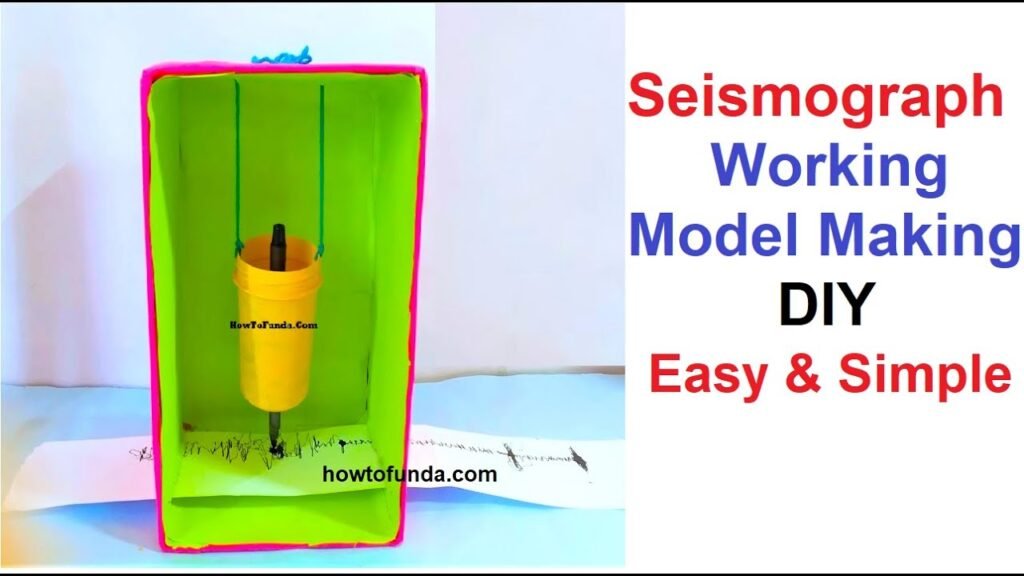Creating a seismograph working model using waste materials like a cardboard box, a pen, a plastic cup, thread, and white paper is a great way to understand how seismographs work.

Here’s a step-by-step guide to help you build this model:
Materials Needed:
- Cardboard box (as the base and structure)
- Pen (to act as the marker)
- Plastic cup (to hold the pen)
- Thread or string (to suspend the cup)
- White paper (to record the seismic waves)
- Scissors or a craft knife
- Tape or glue
- A small weight (e.g., a stone or metal washer) to stabilize the pen
- A small motor or manual shaking mechanism (optional, for demonstration)
Step by Step Video Instructions:
1. Prepare the Cardboard Box:
- Cut a large rectangular opening on one side of the cardboard box to allow easy access to the inside. This will be the base and frame for your seismograph.
2. Set Up the Pen Holder:
- Make a small hole at the bottom of the plastic cup, just big enough for the pen to fit through.
- Insert the pen through the hole in the cup, with the tip pointing downwards. The pen should be able to move freely.
- Secure the pen to the cup with tape or glue if necessary. Attach a small weight (like a stone or metal washer) to the bottom of the pen to keep it steady.
3. Create the Suspension System:
- Cut four pieces of thread, each about 15-20 cm long.
- Punch four evenly spaced holes around the rim of the plastic cup.
- Tie one end of each thread to the holes in the cup.
- Attach the other ends of the threads to the top of the cardboard box, so that the cup hangs freely inside the box with the pen suspended just above the bottom of the box.
4. Prepare the Recording Surface:
- Place a strip of white paper at the bottom of the cardboard box. This paper will record the seismic waves.
- You can use tape to secure the paper in place, ensuring it lies flat.
5. Demonstrate the Seismograph:
- To simulate an earthquake, you can shake the box manually or use a small motor to create vibrations.
- As the box shakes, the suspended pen will move, drawing lines on the white paper that represent the seismic waves.
Explanation:
A seismograph is an instrument used to detect and record earthquakes by measuring the vibrations of the ground.
Here’s how our model works:
- Structure: The cardboard box serves as the base and frame for our seismograph.
- Pen Holder: A plastic cup holds a pen, which acts as the marker. The pen is suspended from the top of the box using threads.
- Suspension System: The pen is suspended freely inside the box, allowing it to move independently of the box itself.
- Recording Surface: A strip of white paper at the bottom of the box records the movements of the pen.
When the box shakes, simulating an earthquake, the pen remains relatively stationary due to inertia, while the box moves. This relative motion causes the pen to draw lines on the paper, representing the seismic waves.
This simple model demonstrates the basic principle of a seismograph, showing how it records the intensity and duration of seismic activity. By studying the patterns drawn on the paper, scientists can determine the strength and location of an earthquake.

